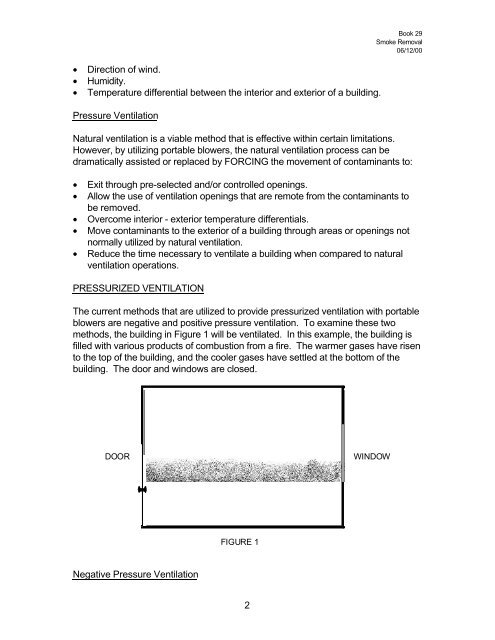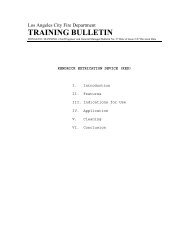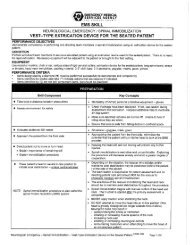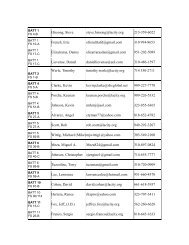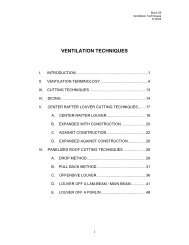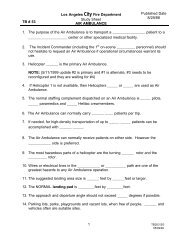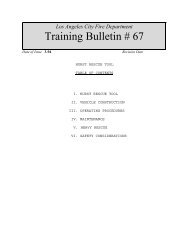SMOKE REMOVAL I. INTRODUCTION ... - LAFD Training
SMOKE REMOVAL I. INTRODUCTION ... - LAFD Training
SMOKE REMOVAL I. INTRODUCTION ... - LAFD Training
You also want an ePaper? Increase the reach of your titles
YUMPU automatically turns print PDFs into web optimized ePapers that Google loves.
• Direction of wind.<br />
• Humidity.<br />
• Temperature differential between the interior and exterior of a building.<br />
Pressure Ventilation<br />
2<br />
Book 29<br />
Smoke Removal<br />
06/12/00<br />
Natural ventilation is a viable method that is effective within certain limitations.<br />
However, by utilizing portable blowers, the natural ventilation process can be<br />
dramatically assisted or replaced by FORCING the movement of contaminants to:<br />
• Exit through pre-selected and/or controlled openings.<br />
• Allow the use of ventilation openings that are remote from the contaminants to<br />
be removed.<br />
• Overcome interior - exterior temperature differentials.<br />
• Move contaminants to the exterior of a building through areas or openings not<br />
normally utilized by natural ventilation.<br />
• Reduce the time necessary to ventilate a building when compared to natural<br />
ventilation operations.<br />
PRESSURIZED VENTILATION<br />
The current methods that are utilized to provide pressurized ventilation with portable<br />
blowers are negative and positive pressure ventilation. To examine these two<br />
methods, the building in Figure 1 will be ventilated. In this example, the building is<br />
filled with various products of combustion from a fire. The warmer gases have risen<br />
to the top of the building, and the cooler gases have settled at the bottom of the<br />
building. The door and windows are closed.<br />
DOOR WINDOW<br />
Negative Pressure Ventilation<br />
FIGURE 1


